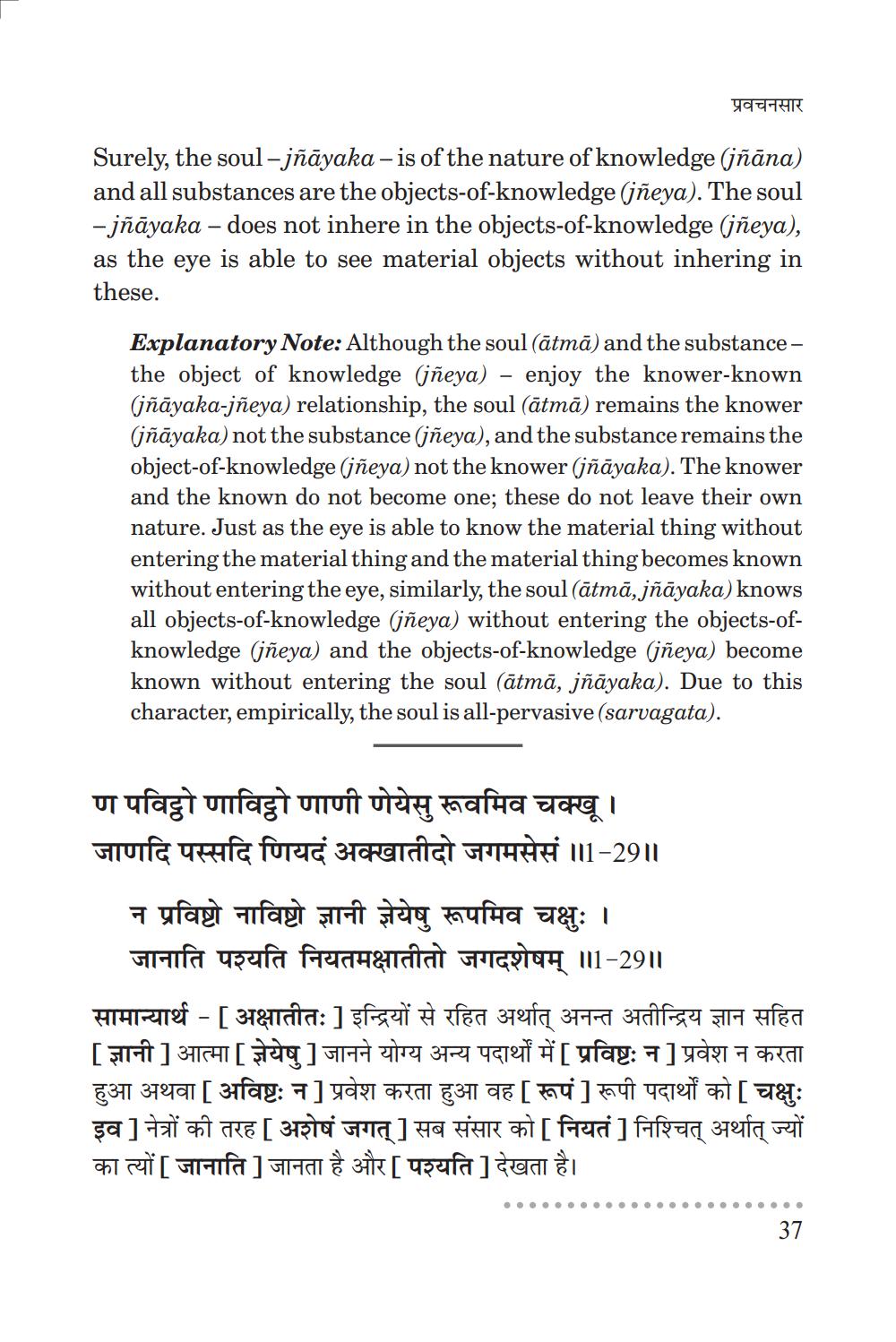________________
Surely, the soul-jñāyaka - is of the nature of knowledge (jñāna) and all substances are the objects-of-knowledge (jñeya). The soul - jñāyaka – does not inhere in the objects-of-knowledge (jñeya), as the eye is able to see material objects without inhering in these.
Explanatory Note: Although the soul (ātmā) and the substancethe object of knowledge (jñeya) enjoy the knower-known (jñāyaka-jñeya) relationship, the soul (ātmā ) remains the knower (jñāyaka) not the substance (jñeya), and the substance remains the object-of-knowledge (jñeya) not the knower (jnāyaka). The knower and the known do not become one; these do not leave their own nature. Just as the eye is able to know the material thing without entering the material thing and the material thing becomes known without entering the eye, similarly, the soul (ātmā jñāyaka) knows all objects-of-knowledge (jñeya) without entering the objects-ofknowledge (jñeya) and the objects-of-knowledge (jñeya) become known without entering the soul (ātmā, jñāyaka). Due to this character, empirically, the soul is all-pervasive (sarvagata).
-
ण पविट्ठो णाविट्ठो णाणी येसु रूवमिव चक्खू । जादि पस्सदि यिदं अक्खातीदो जगमसेसं ॥1-29॥
प्रवचनसार
न प्रविष्टो नाविष्टो ज्ञानी ज्ञेयेषु रूपमिव चक्षुः । जानाति पश्यति नियतमक्षातीतो जगदशेषम् ॥1 - 29॥
सामान्यार्थ - [ अक्षातीतः ] इन्द्रियों से रहित अर्थात् अनन्त अतीन्द्रिय ज्ञान सहित [ ज्ञानी ] आत्मा [ ज्ञेयेषु ] जानने योग्य अन्य पदार्थों में [ प्रविष्टः न ] प्रवेश न करता हुआ अथवा [ अविष्टः न ] प्रवेश करता हुआ वह [ रूपं ] रूपी पदार्थों को [ चक्षुः इव ] नेत्रों की तरह [ अशेषं जगत् ] सब संसार को [ नियतं ] निश्चित् अर्थात् ज्यों का त्यों [ जानाति ] जानता है और [ पश्यति ] देखता है।
.....
37




